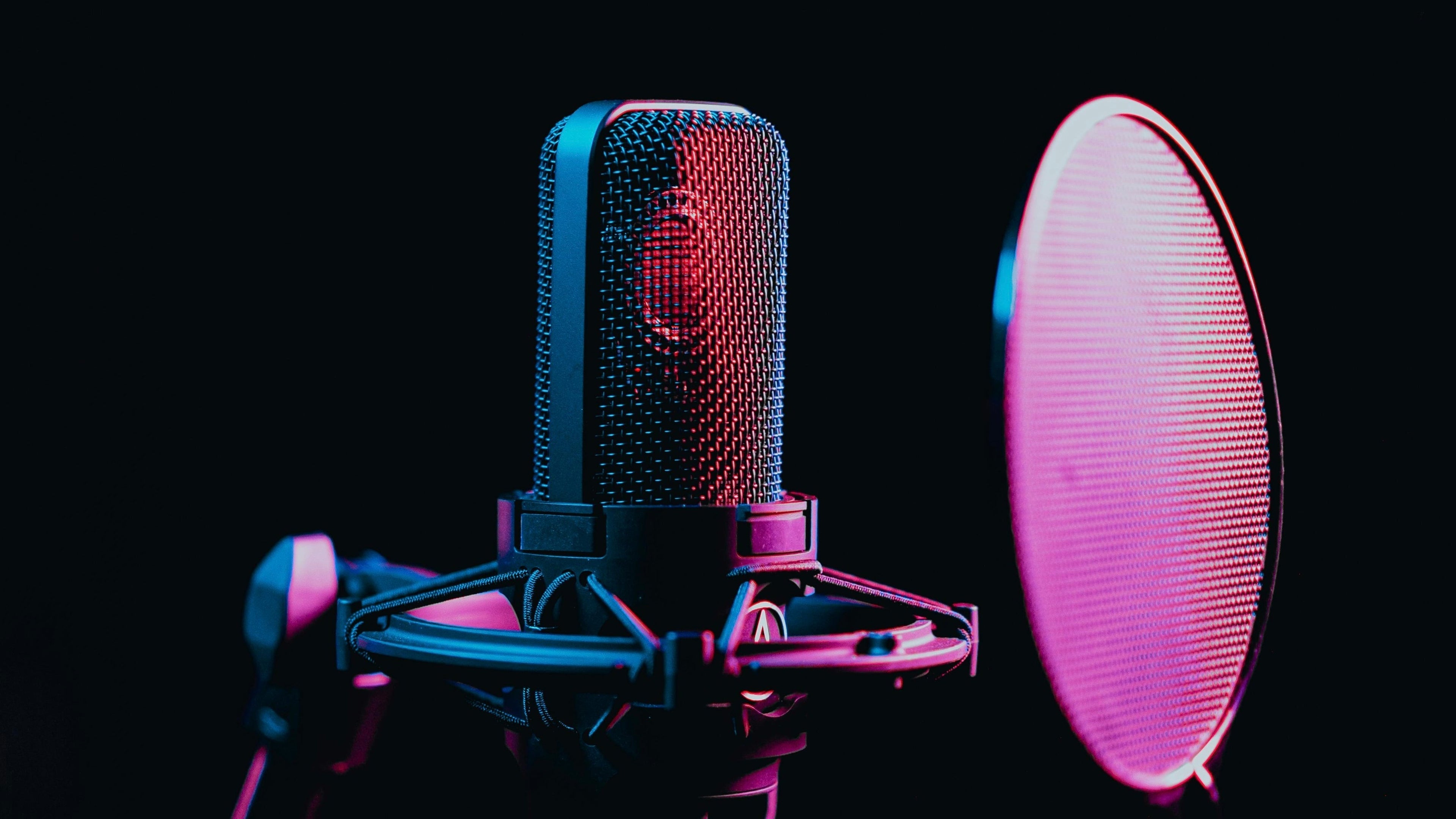Recording vocals at home can feel like a daunting task, especially if you’re chasing the kind of clarity and depth that professional studios produce. However, with the right approach, a few key tools, and some practical techniques, you can make your home recordings sound polished and professional. In this post, we’ll go over actionable tips for recording vocals at home that will elevate your tracks and make them stand out.
Choosing the Right Space for Home Vocal Recording
One of the most critical tips for recording vocals at home is selecting the right environment. Unlike professional studios, most home spaces aren’t acoustically treated, which means unwanted echoes, room reflections, and background noise can easily sneak into your recordings. Ideally, you want to find a small, quiet room with soft furnishings. Carpets, curtains, and even bookshelves can help absorb sound and reduce reflections. If you’re working in a space with hard surfaces, consider using temporary solutions like blankets or foam panels to create a makeshift vocal booth. Paying attention to your room’s acoustics from the beginning can save you hours of editing later.
Investing in the Right Microphone
A microphone is one of the most important tools for achieving studio-quality vocals. While it’s tempting to record directly into your laptop’s built-in mic, the difference in quality will be noticeable. For home recording, a condenser microphone is usually the best choice due to its sensitivity and ability to capture vocal nuances. A condenser microphone uses a capacitor (or condenser) to convert sound waves into an electrical signal, which makes it highly responsive to subtle details like breath, tone, and resonance. This sensitivity makes it ideal for vocals, where capturing every nuance can make a huge difference.
There are two common types of condenser microphones you might encounter: USB condenser microphones and XLR condenser microphones. USB condenser mics are convenient because they plug directly into your computer, allowing for easy setup without additional equipment. XLR microphones, on the other hand, use a three-pin connection and require an audio interface to connect to your computer. While XLR setups are a bit more complex, they typically provide higher fidelity, lower noise, and more control over your recording. Pairing a condenser XLR mic with a good audio interface is often the closest you can get to professional studio quality at home. Choosing a mic that complements your voice type is also essential. Experiment with different models if possible, and listen to how they capture your tone, warmth, and presence.
Setting Up Your Microphone Correctly
Even the best microphone can’t perform miracles if it’s set up incorrectly. One crucial tip for recording vocals at home is to position the mic properly. Typically, the microphone should be placed around six to twelve inches away from your mouth, and slightly off-axis to reduce harsh plosive sounds caused by letters like “p” and “b.” Using a pop filter in front of the microphone helps minimize these plosives, giving your recordings a cleaner and more professional sound. Additionally, consider using a shock mount to prevent vibrations from traveling through your mic stand, especially if you’re recording in a room with hard floors.
Managing Your Vocal Performance
A big part of capturing studio-quality vocals is your performance itself. Home recordings are only as good as the performance you deliver, so it’s important to approach recording sessions with focus and preparation. Warm up your voice before recording, stay hydrated, and make sure you’re in a comfortable posture. If possible, record multiple takes of each section of your song. This allows you to comp the best parts together, creating a seamless performance that sounds intentional and polished. Remember, technical perfection matters, but emotional delivery and consistency are equally crucial for professional-sounding vocals.
Controlling Room Noise and Background Sounds
Even in a quiet home environment, subtle background noise can creep into your recordings, reducing their overall quality. Fans, air conditioning units, or street noise can all become noticeable when amplified in your mix. One of the most effective tips for recording vocals at home is to address these issues before you hit record. Turn off appliances that create hums or hisses, close windows, and consider recording at times of day when external noise is minimal. You can also use noise gates or post-processing software to clean up recordings, but reducing noise at the source always produces better results.
Proper Gain Staging and Recording Levels
Another essential tip for recording vocals at home is to understand and control your recording levels. Setting your microphone input gain too high can cause distortion, while too low can result in weak, noisy recordings. Aim for a level that peaks around -6dB to -3dB on your recording software’s meter. This provides a healthy signal without clipping and gives you enough headroom for processing during mixing. Monitoring levels in real-time and adjusting your performance distance from the mic can make a significant difference in clarity and punch.
Using Vocal Processing Sparingly
Achieving studio-quality vocals doesn’t rely solely on natural recording—it also involves some post-processing. Compression, EQ, and reverb are the most common tools used to shape vocal tracks. Compression helps control dynamic range, making softer passages audible while taming louder sections. EQ can remove unwanted frequencies, enhance presence, and bring warmth to your voice. Reverb adds depth and space, making the vocal feel more “produced” without overdoing it. When applying these effects, less is often more; subtle adjustments usually sound more natural than heavy-handed processing.
Layering and Doubling Vocals
Many professional recordings use multiple layers of vocals to create richness and texture. One of the effective tips for recording vocals at home is to experiment with doubling or layering certain parts. Recording a second or even third take of the same line and blending them together can create a fuller, more engaging sound. You can also try harmonies or background layers to add depth. While layering adds complexity, it’s important to keep your tracks organized and avoid phase issues by slightly offsetting timing or using panning techniques.
Monitoring Your Voice While Recording
Monitoring is often overlooked in home setups but is essential for precision. Using good-quality headphones allows you to hear your performance clearly without causing sound leakage into the microphone. Make sure to set up your DAW (digital audio workstation) to provide low-latency monitoring, so there’s no distracting delay between your singing and what you hear. This ensures you stay on pitch, maintain consistent dynamics, and capture a confident performance. Some home recording setups also include external audio monitors, which can help evaluate your vocal tone in a more neutral listening environment.
Taking Breaks and Maintaining Vocal Health
Recording at home often comes with fewer constraints than a studio session, which can be both a blessing and a curse. One common mistake is pushing through long recording sessions without breaks. Vocal fatigue can compromise tone, intonation, and stamina. One of the essential tips for recording vocals at home is to schedule short breaks between takes. Stretch, sip water, and rest your voice to maintain consistency. Over time, this habit not only improves your recordings but also protects your vocal health for future sessions.
Experimenting with Microphone Placement
A simple but powerful way to improve your home recordings is to experiment with microphone placement. Even small changes in distance, angle, or height can drastically alter the sound. Moving slightly closer can increase intimacy and warmth, while moving back might capture more room ambience. Tilting the mic up or down can reduce sibilance or accentuate certain frequencies. The key is to listen critically and make adjustments based on what serves the song. Recording multiple test takes with different placements can help you find the sweet spot for each performance.
Using Software Tools to Enhance Quality
While capturing the best possible sound at the source is ideal, software tools can elevate your recordings to professional levels. Many home producers rely on DAWs with built-in vocal effects, pitch correction, and editing capabilities. Tools like auto-tune or Melodyne, which is software that allows precise pitch and timing adjustments to your vocals while keeping them sounding natural, can subtly correct pitch issues without sounding artificial. De-essers help tame harsh “s” sounds, while mastering plugins can polish your final vocal track, ensuring it sits well in a mix. Learning to use these tools effectively is an essential part of modern home recording, bridging the gap between DIY and studio-quality production.
Staying Organized and Efficient
Recording at home often lacks the structured workflow of a professional studio. One of the tips for recording vocals at home that many artists overlook is staying organized. Label your takes clearly, keep your session files structured, and save versions frequently. Not only does this save time, but it also prevents frustration when searching for the perfect take. Consistent organization also allows you to focus more on performance and creativity rather than technical hiccups.
Embracing Your Unique Sound
Finally, achieving studio-quality vocals at home isn’t just about gear, technique, or post-processing—it’s also about embracing your unique voice. Professional engineers often talk about capturing the character of a vocalist rather than chasing a perfect, sterile sound. Don’t be afraid to experiment with tone, phrasing, or stylistic choices that make your performance distinct. Combining technical precision with authenticity is what truly makes vocals shine, whether recorded in a world-class studio or a bedroom setup.
Conclusion
Recording vocals at home that sound studio-quality is entirely achievable with the right approach. From choosing an acoustically friendly space to investing in a suitable microphone, controlling noise, and understanding post-processing techniques, every step contributes to a polished final product. Remember that the foundation of great home recordings lies in preparation, attention to detail, and a commitment to capturing your best performance. By implementing these tips for recording vocals at home, including understanding condenser and XLR microphones and using tools like Melodyne, you can elevate your tracks, maintain vocal health, and create recordings that rival professional studio sessions. With patience, experimentation, and consistency, your home recordings can sound as impressive as any commercial release.

